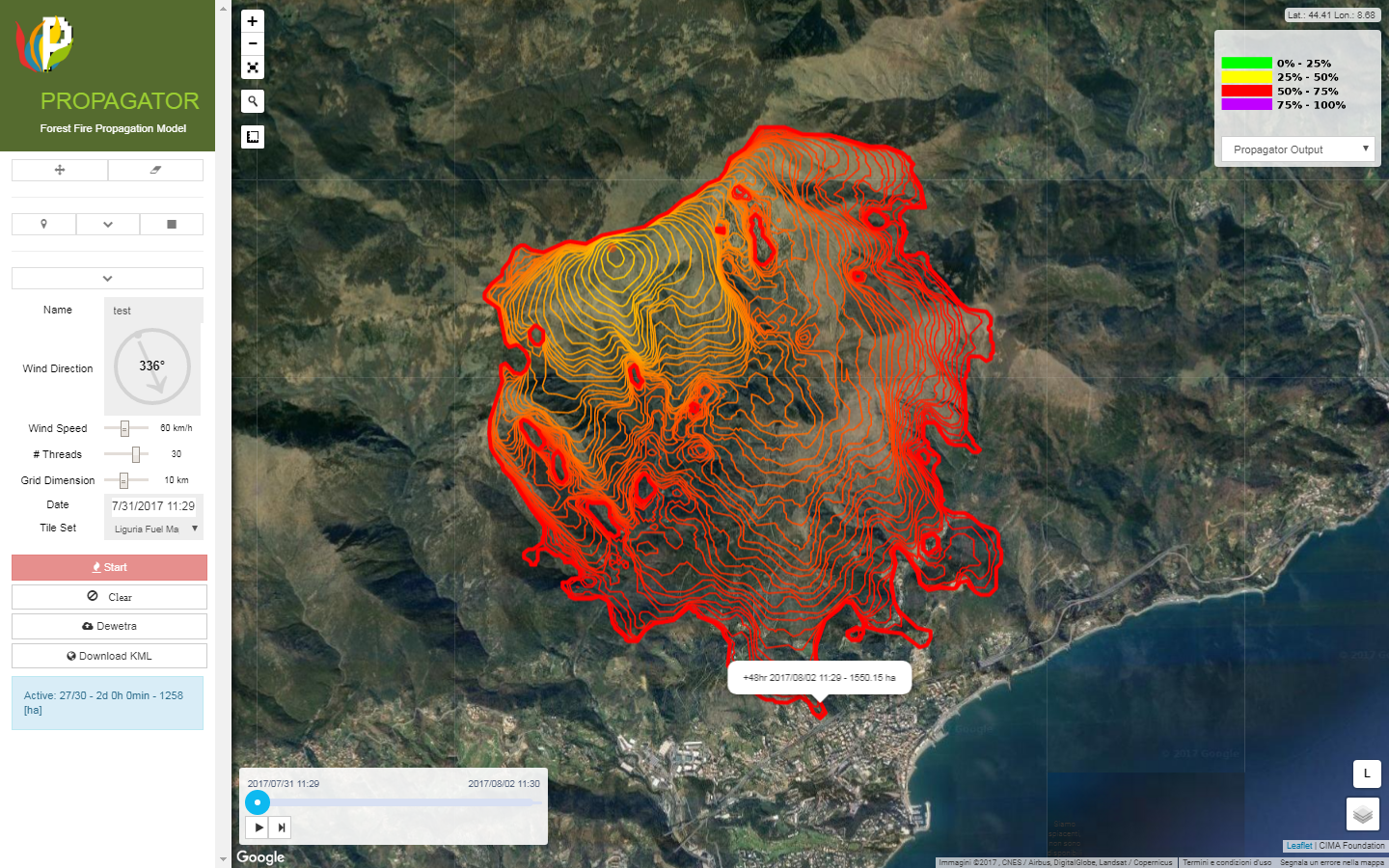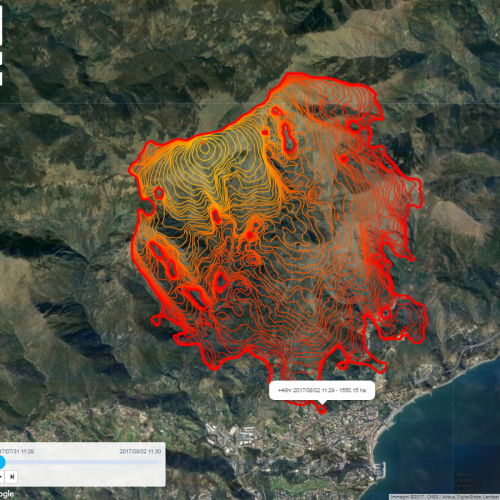Description
The PROPAGATOR algorithm provides probabilistic forecasts of the spatio-temporal distribution of fire spread after ignition (propagation) given user defined scenarios (Biondi et al., 2010).
The model has been implemented and made operational over the Italian territory. The model is implemented on a regular grid of 20 m. The high spatial resolution is fundamental to consider the spatial distribution of vegetation and obstacles for fire spread, e.g. roads, streams.
PROPAGATOR gives for each grid cell the probability to be burnt by the fire. This probability is obtained by evaluating the fire frequency for each cell, based on a significant number of stochastic simulations. All the simulations start from the same ignition point and end with self-extinction of the fire front. The model requires only the ignition point (user defined) and the wind speed and direction. The wind vector is assumed to change randomly based on a distribution function assigned by a priori and is modified by wind and slope characteristics. Each cell is characterized by its elevation (DEM) and by its land use/land cover (e.g. broadleaf forest, shrubland, grassland, Mediterranean conifer forest, conifer mountain forest, and non-vegetated areas). A fire spread probability is defined for land use/land cover and for each vegetation transition.
PROPAGATOR is driven by a forecasted wind field obtained from a NWP model. The lead time is 2 days. Fire forecasts can be released very fast and depend on the forecast frequency of the NWP model. The algorithm will be run first for the Liguria Pilot Site for a detailed analysis of fire hazard impacts. Post-processing of the results of PROPAGATOR using a.o. CALIVER, allows to obtain forecasts of the trajectory and extents of the spread after ignition (burnt-area probability, and perimeter of burnt area).
The input requested are then:
- Meteorological model (Wind velocity and direction)
- Static information (Digital Elevation Model, Land cover, Ignition point, Slope and Aspect)





